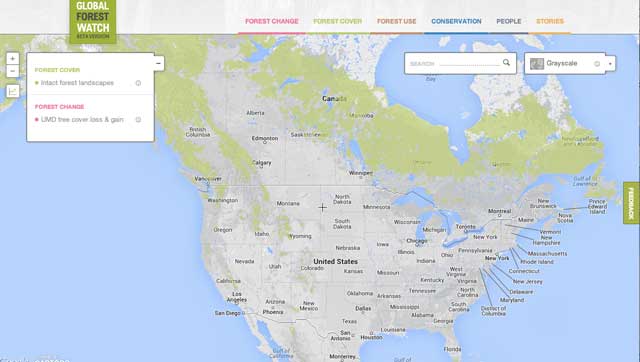The world is vast and travel budgets finite, so looking for deforestation as it’s happening all over the world is nigh impossible. That is, of course, unless you have an all seeing eye in the sky — and, hey, you know what, there are satellites orbiting over all of our heads right now. Global Forest Watch is a new, near real-time forest monitoring system from World Resources Institute, Google and another 40-odd partner organisations.
Using technology including Google Earth and Google Maps, Global Forest Watch is the mother of all forest maps. Take a gander at the interactive map yourself, where you can plot anything from the rise and decline of forests to their conservation status to whether they’ve been lost to logging or mining or palm oil.

If you fire the map up to the United States and look at forest gain and loss, a large swath of the American South will light up magenta (The map uses red to indicate forest loss and blue for gain.) Why so much gain and loss in the in South?
This is America’s “wood basket“. The forests are essentially farmed — planted and then harvested for timber years later. According to Southern Forests for the Future, although these trees “comprise just 2 per cent of global forest cover, they produce 25 per cent of the world’s pulpwood for paper and 18 per cent of its industrial timber.”
Global Forest Watch’s data for forest changes goes back until 2000, but I almost wished it went back further, so we can understand the historical scale of deforestation. In the United States, for example, colonists felled millions of trees as they settled from east to west, leaving virtually no virgin forest in the entire country.

In green, North America’s untouched, intact forests
But I wanted to end on a positive note, with a beautifully written story from The Boston Globe last year subtitled: “These woods are lovely dark and back.” Eighty per cent of New England is covered by forest or thick woods again, compared to just 30 or 40 in the 1800s. This is a recovery that early conservationists like Henry David Thoreau, who railed against America’s deforestation, could never have imagined. It can seem like a hopeless situation staring at the red all over these maps, but history reminds us we can still do something about it. [Google]
